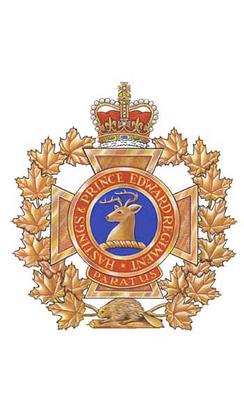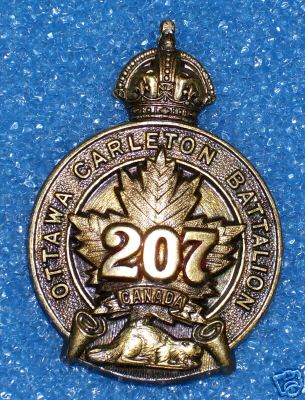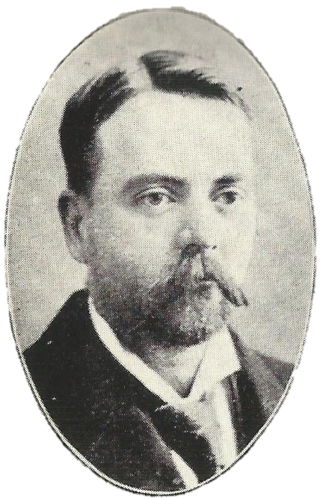
Kitchener is a city in the Canadian province of Ontario, about 100 km (62 mi) west of Toronto. It is one of three cities that make up the Regional Municipality of Waterloo and is the regional seat. Kitchener was known as Berlin until a 1916 referendum changed its name. The city covers an area of 136.86 km2, and had a population of 256,885 at the time of the 2021 Canadian census.

The Regional Municipality of Waterloo is a metropolitan area of Southern Ontario, Canada. It contains the cities of Cambridge, Kitchener and Waterloo, and the townships of North Dumfries, Wellesley, Wilmot and Woolwich. Kitchener, the largest city, is the seat of government.

Sir Samuel Hughes, was the Canadian Minister of Militia and Defence during World War I. He was notable for being the last Liberal-Conservative cabinet minister, until he was dismissed from his cabinet post.
The city of Berlin, Ontario, Canada, changed its name to Kitchener by referendum in May and June 1916. Named in 1833 after the capital of Prussia and later the German Empire, the name Berlin became unsavoury for residents after Britain and Canada's entry into the First World War.

Waterloo County was a county in Canada West in the United Province of Canada from 1853 until 1867, then in the Canadian province of Ontario from 1867 until 1973. It was the direct predecessor of the Regional Municipality of Waterloo.

German Canadians are Canadian citizens of German ancestry or Germans who emigrated to and reside in Canada. According to the 2016 census, there are 3,322,405 Canadians with full or partial German ancestry. Some immigrants came from what is today Germany, while larger numbers came from German settlements in Eastern Europe and Imperial Russia; others came from parts of the German Confederation, Austria-Hungary and Switzerland.
The Canadian Expeditionary Force (CEF) was the expeditionary field force of Canada during the First World War. It was formed on August 15, 1914 following Britain’s declaration of war on the German Empire, with an initial strength of one infantry division. The division subsequently fought at Ypres on the Western Front, with a newly raised second division reinforcing the committed units to form the Canadian Corps. The CEF and corps was eventually expanded to four infantry divisions, which were all committed to the fighting in France and Belgium along the Western Front. A fifth division was partially raised in 1917, but was broken up in 1918 and used as reinforcements following heavy casualties.

The Royal Hamilton Light Infantry (Wentworth Regiment) (RHLI) is a Primary Reserve infantry regiment of the Canadian Army, based at John Weir Foote VC Armoury in Hamilton, Ontario. The RHLI is part of 31 Canadian Brigade Group, which is part of 4th Canadian Division.

The Hastings and Prince Edward Regiment is a Primary Reserve infantry regiment of the Canadian Army. The regiment is part of 33 Canadian Brigade Group, one of four brigade groups of 4th Canadian Division. The regimental headquarters and one company are at 187 Pinnacle Street in Belleville and on Willmott Street in Cobourg, with another rifle company in Peterborough. The Peterborough Armoury houses what was traditionally B Company or Moro Company. Moro Company also serves as the headquarters for the regiment’s Assault Pioneer Platoon. Normally, the regiment deploys as a composite, Ortona Company, while the headquarters and administration form Somme Company.

The Royal Highland Fusiliers of Canada is a Primary Reserve light infantry regiment of the Canadian Army, with companies in Cambridge and Kitchener, and is an infantry sub-unit of 31 Canadian Brigade Group, headquartered in London, Ontario. The Princess Margaret, Countess of Snowdon, and The Prince Andrew, Duke of York, as members of the Canadian Royal Family, acted as Colonel-in-Chief.

The Lorne Scots is a Primary Reserve infantry regiment of the Canadian Army. It is part of the 4th Canadian Division's 32 Canadian Brigade Group.

The 207th (Carleton) Battalion, CEF was a battalion of the First World War Canadian Expeditionary Force.
The 123rd Battalion, Royal Grenadiers, CEF was a unit in the Canadian Expeditionary Force during the First World War. Based in Toronto, Ontario, they began recruiting in November 1915. After arriving in England, they continued to train as an infantry battalion for several months, but just before mobilizing to France in January 1917, the battalion was redesignated the 123rd Pioneer Battalion, Royal Grenadiers, CEF.

The Highland Light Infantry of Canada was an infantry regiment of the Canadian Army. In 1965, the regiment was amalgamated with The Scots Fusiliers of Canada to form The Highland Fusiliers of Canada.
The 111th Battalion, CEF, was an infantry battalion of the Great War Canadian Expeditionary Force. The 111th Battalion was authorized on 22 December 1915 and embarked for Britain on 25 September 1916, where, on 13 October 1916, its personnel were absorbed by the 35th Battalion, CEF, to provide reinforcements for the Canadian Corps in the field. The battalion disbanded on 21 May 1917.

The 113th Battalion, CEF, was an infantry battalion of the Great War Canadian Expeditionary Force. The 113th Battalion was authorized on 22 December 1915 as part of a recruiting drive in which men from the same region could enlist and serve together.

George Herbert BowlbyMDCM was a Canadian physician and surgeon, municipal politician, and military officer. He was born in the town of Berlin, Ontario, where he later practiced medicine and served in a succession of elected municipal positions, culminating in a term as mayor in 1901. Bowlby was the first person born in Berlin to become its mayor. In 1915, following the outbreak of the First World War, he joined the Canadian Expeditionary Force and travelled to England. There, he served in the Canadian Army Medical Corps and achieved the rank of Major. In November 1916, at the age of 51, he died in an accidental fall from a cliff near the military hospital in Sussex where he was assigned.

The Waterloo Pioneer Memorial Tower was built in 1926 in Kitchener to commemorate the arrival of the Pennsylvania Dutch to Southwestern Ontario. It was conceived by William Henry Breithaupt, who wanted to heal wounds of nationalism fomented in the city during World War I. This led to increasing anti-German sentiment and an eventual change in the name of the city from Berlin to Kitchener.
The Scots Fusiliers of Canada was an infantry regiment of the Non-Permanent Active Militia of the Canadian Militia. In 1965, the regiment was amalgamated with the Highland Light Infantry of Canada to form The Highland Fusiliers of Canada.
James Munroe Franklin was a private in the Canadian Expeditionary Force (CEF) and is believed to be the first Black Canadian to be killed in action during the First World War. Born in Mississippi, Franklin and his family immigrated to Hamilton, Ontario in 1901. In July 1915, he was one of the first Black Canadians to be accepted into the CEF, and was deployed in France as part of the 4th Overseas Battalion. In October 1916, he participated in the assault in the Attack on Regina Trench in the Battle of the Somme. James M. Franklin was one of the 770 Canadian casualties.












